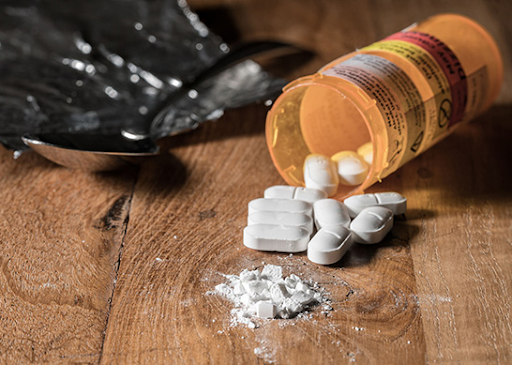How Fentanyl Addiction Upturned my Family
It wasn’t until my brother lost everything that I begged for him to get help.
I’d heard it was best to wait these things out, so I waited. I waited until he severed his trust with the family, I waited until he ran out of money and lost his job, and I waited even though I saw him spiraling further and further down a path of self-destruction.
I begged him to get help, and he refused. This kind of life just seemed easier to him. A life of needles, patches, and nasal sprays, of drug use, of illicit fentanyl use.
A life of addiction.
The thing is, he didn’t have to suffer. If he had been offered help sooner, if he had realized that someone was in his corner and wanted to see him recover, he might’ve taken the helping hand much sooner.
The Opioid Crisis in Canada (Including Fentanyl)
Opioid addiction continues to be a pertinent issue within Canada, seeing as there were 11 overdose deaths per day in 2017. Further, fentanyl is a powerful opioid that plays into overdose deaths, being that a few grains illegal fentanyl are enough to kill you if mixed into fake pills or a synthetic opioid.

My brother was lucky enough to not have encountered risk of an overdose from illegal opioids, but other people he knew weren’t so lucky. Drug dealers could mix fentanyl into synthetic opioids or combine other drugs, and the purchasers would be none the wiser. And, if opioid overdoses are not treated quickly and correctly, the user could die.
How Does Fentanyl Addiction Occur, and How Do I Know if a Loved One is Using?
Fentanyl addiction, or addiction to other opioids in general, can occur for any number of reasons. It could be due to mental health issues, general dissatisfaction with life, or a need to make day-to-day life a little easier. There is no shortage of reasons.
For my brother, he suffered severe chronic pain, and anxiety, and fentanyl and prescription opioid for addiction controls pain and provided temporary relief.

We started noticing something was off when our cash was mysteriously disappearing, my brother was out in the late hours of the night, and we weren’t sure who he was with or what he was up to. When confronted, he became defensive and lied.
There is no predetermined way to figure out if your loved one is using or not, but it’s important to remember you cannot force them to seek help. That will push them away further.
Be there for them. If your loved one is using, being there for them is the best thing you can do.
How Does Fentanyl Affect the Body and Mind?
Addiction is such a pertinent and nasty disease because of how intensive it is on a person’s physical and mental well-being. As fentanyl continues to be used, it begins to slowly take over a person’s life until they cannot think of anything else besides their next dosage. This is why the opioid crisis is so pertinent, and has been for several years.
Often as a side effect of substance abuse, like in my family, addicts become more withdrawn socially and begin to lie and steal, damaging their otherwise stable relationships and putting everyone who cares for them at a distance.

Further, the fear of withdrawal symptoms pushes them to continue using, even if they are aware of how negatively it is affecting their life.
Options to Treat Opioid Addiction

There is an 80-90% success rate for people with substance use disorders who seek inpatient rehab, and 80% of people struggling with addiction who sought out rehab reported a better quality of life post-treatment.
Even if inpatient medical attention doesn’t feel like the right fit for treatment, there are outpatient treatment options that have just as high of a success rate.
How is fentanyl addiction treated?
Every rehab facility has a different method of treatment, but this step process is generally what patients can expect:
- Admission process – Patients speak with a counselor to assess their situation, either over the phone or in person. From there, both the patient and the medical professionals can garner what type of treatment might be best for that individual and their circumstances.
- Enter the facility – The patient enters the facility (if they haven’t already), and is escorted by a medical team to see a doctor.
- Doctor visit – Doctors will often prescribe a detox medication to ease withdrawal symptoms, as well as have a prolonged chat with the patient to discuss their fentanyl addiction treatment and what they are seeking to gain from rehab.
- Starting withdrawal – Patients are monitored under 24-hour surveillance as they go through the withdrawal process, and slowly begin to wean off of the prescription drug or medication. This is the most beneficial step of in-patient rehab, as withdrawal symptoms are often what stops addicts in their tracks. However, with a medical team and constant observation, the success rate for withdrawal goes up exponentially.

- Post-withdrawal – Once the patient begins feeling better, they start to participate in the rehab-regulated daily activities. Every rehab center does this differently, but these activities can include: group counseling, individual counseling, case management session, and experiential therapy by going on outings and doing activities off-site, as well as nightly recovery meetings with local support groups.
- Complete recovery – In-patient programs can last anywhere between 30 to 90 days, widely depending on the patient and their circumstances. When they leave the facility, rehab centers take care to maintain contact with them, often requiring face-to-face visits with their therapist and occasional check-ups.
Fentanyl Addiction Treatment in Canada

This search engine has proved useful in searching for a Canadian centre as well as treatment programs elsewhere, and allows you to filter based on both location and payment options: https://www.addictioncenter.com/rehabs/
This search engine has proved useful in searching for a Canadian centre as well as treatment programs elsewhere, and allows you to filter based on both location and payment options: https://www.addictioncenter.com/rehabs/
And for families of addicts, like me, I have found this link useful: https://www.samhsa.gov/families
Closing Statements
Seeing someone you care about battle addiction is excruciatingly painful, and no one understands that more than I do. However, it’s important to remember that you’re not the only one hurting. Addiction is everywhere, but luckily help is too and there are great centers from fentanyl addiction treatment Texas all the way to addiction treatment in Canada.
Your friend, family member, partner, whoever it may be: they’re hurting, too.
While seeing them spiral downwards into a cycle of addiction and self-destruction is enough to keep you up at night, and you want to do everything you can to help, sometimes just being there for them until they ask for help is all you can do.
You cannot force anyone to seek treatment for drug abuse, and addiction is a lifelong battle that you may not be able to rescue someone from. But there are options, and there is hope.
If my brother got better, I’m confident anyone can. It’s just about accepting the help that’s offered, and reminding them that they’re not alone, no matter how alone they feel.
